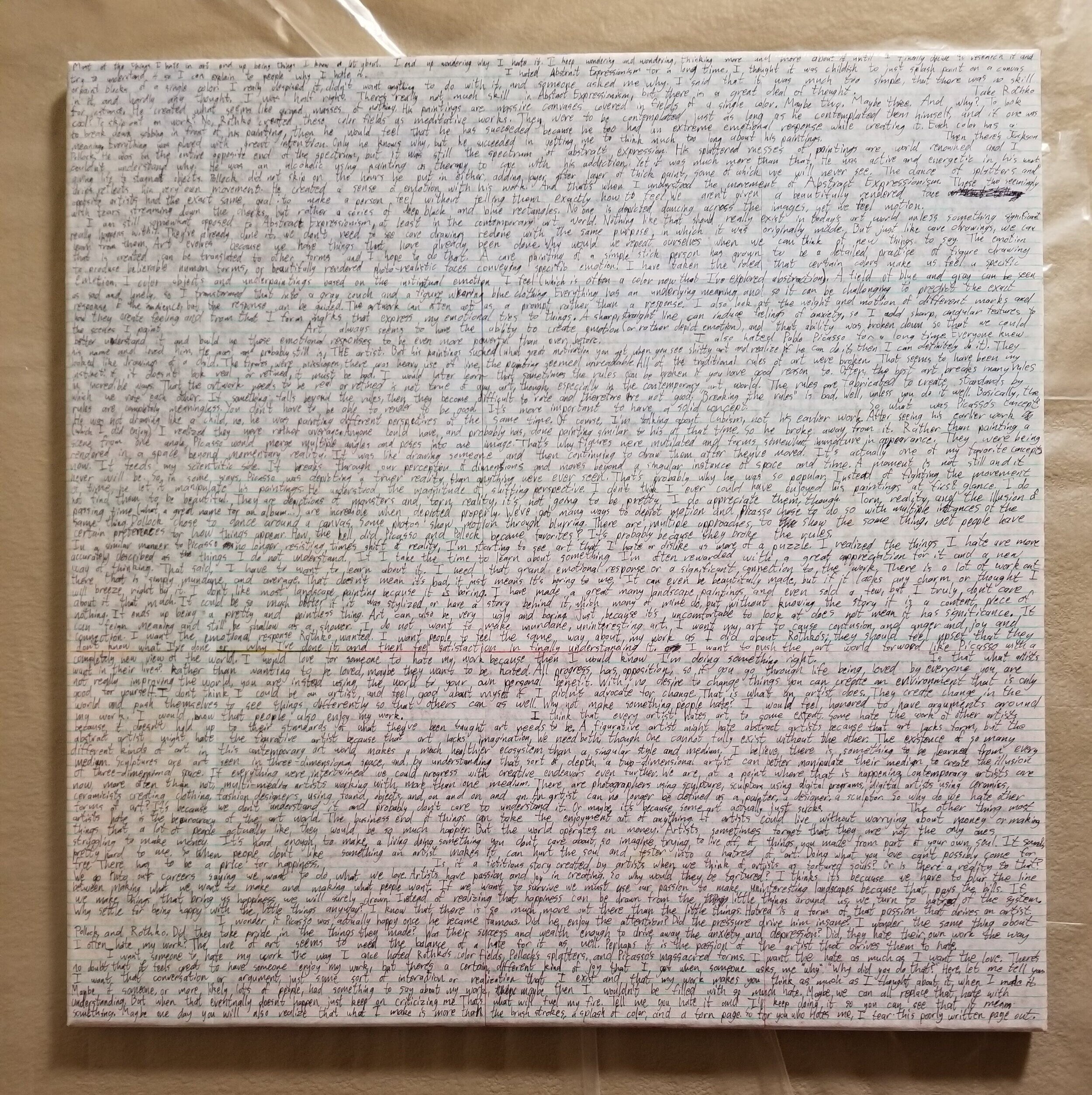These two paintings are part of my newest series, titled Fragments. I am working on a third painting for the series, titled Fortified. The paintings that make up the series focus on haunting images set in a diseased world. Completely void of figures, the paintings present the viewer with unsettlingly empty spaces that feel post-apocalyptic. A gloved hand fuels a vehicle, a series of trash cans stand in an open field, a dining hall lays imprisoned behind a fence. Torn paper covers layers of the same image seen from different perspectives, all the while emulating the collapsing world. What are these scenes to us if they lack the makers of the scene? What do these man-made creations mean if man is removed?
The world is in chaos. The odd and mundane scenes I am painting take the world of the pandemic and rip apart the many layers tucked underneath. By layering a variety of different forms of paper I am infusing the work with nuanced messages. Sometimes the paper may be black and painted on with white paint, creating a world of inversion; other times it is the greasy paper of takeout bags, fusing the waste of an increased cultural activity with imagery of emptiness. Along with the repeated painted scenes on each layer of paper, text is spread throughout the paintings. From pages in a book to my own personal handwriting, these mutilated blurbs show both my understanding of society and the decay of it.
Fuel is a piece looking into the casual act of filling a tank of gas. In this new and strange world we live in, the actions we often see as commonplace become dangerous and unsettling. Hands are no longer mechanisms to achieve basic tasks, but also carriers of disease. We are haunted by the touch of our own hands just as much as the touch of a stranger. The outside world no longer has moments of peace. It is a deadly frontier and every moment could lead to our demise. This simple act, along with many others, has been perverted. It seems impossible not to be in constant fear of interactions with the outside world.
Forlorn, Oil and Paper on Canvas, 24” x 24”, 2020
With the end of people, who is there to take out the trash? Forlorn examines the institutes of society we take for granted, like the system of waste management that we use. These crates that carry our used products also carry disease. If the garbage man is sick, who takes out the garbage? If we are sick, are we exposing the people that manage the trash of the city? Once people are gone, there will no longer be a need for these trash cans. They will become relics of a time once cherished. As our world crumbles into nothing, the simple desires of fast food and the twenty-something-year-old lifestyle will be distant and petty. It is time to reexamine what is meaningful to us as a society.
As we reach the end of the year, consider what is important to you. In the next painting of this series, I am examining the activity of dining out during the pandemic. It is still completely possible to do so, and many people do, but is it worth it? I miss the way the world was eight months ago. I enjoyed eating out with friends and family, going to an arcade or playing a round of mini golf. I miss traveling without the worry of dying from something I touched in a gas station. Unfortunately, COVID-19 is not going away anytime soon. This is a hard time to live in, but change has never been easy. Once we get out of this, things will be different and we will all be better for it. Don’t forget to show people that you love them, even if you can’t show them in person.






